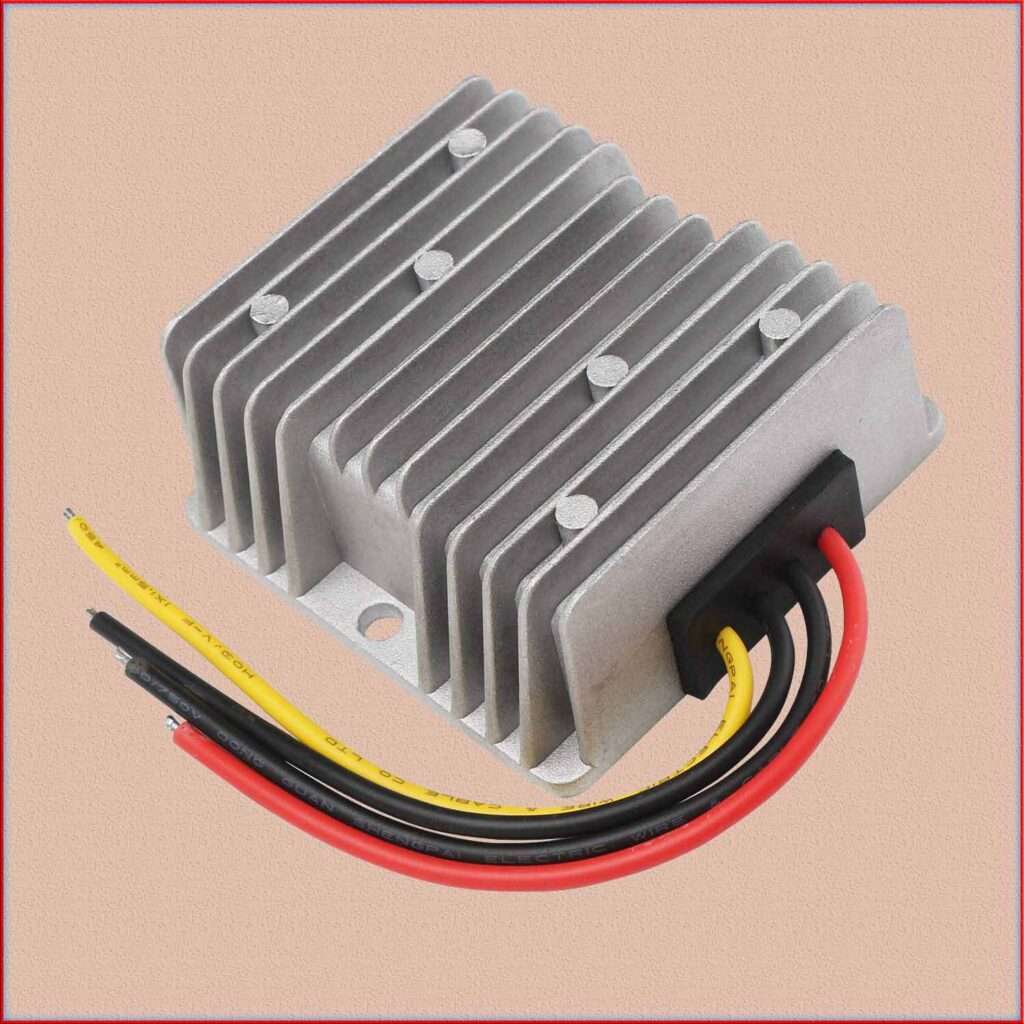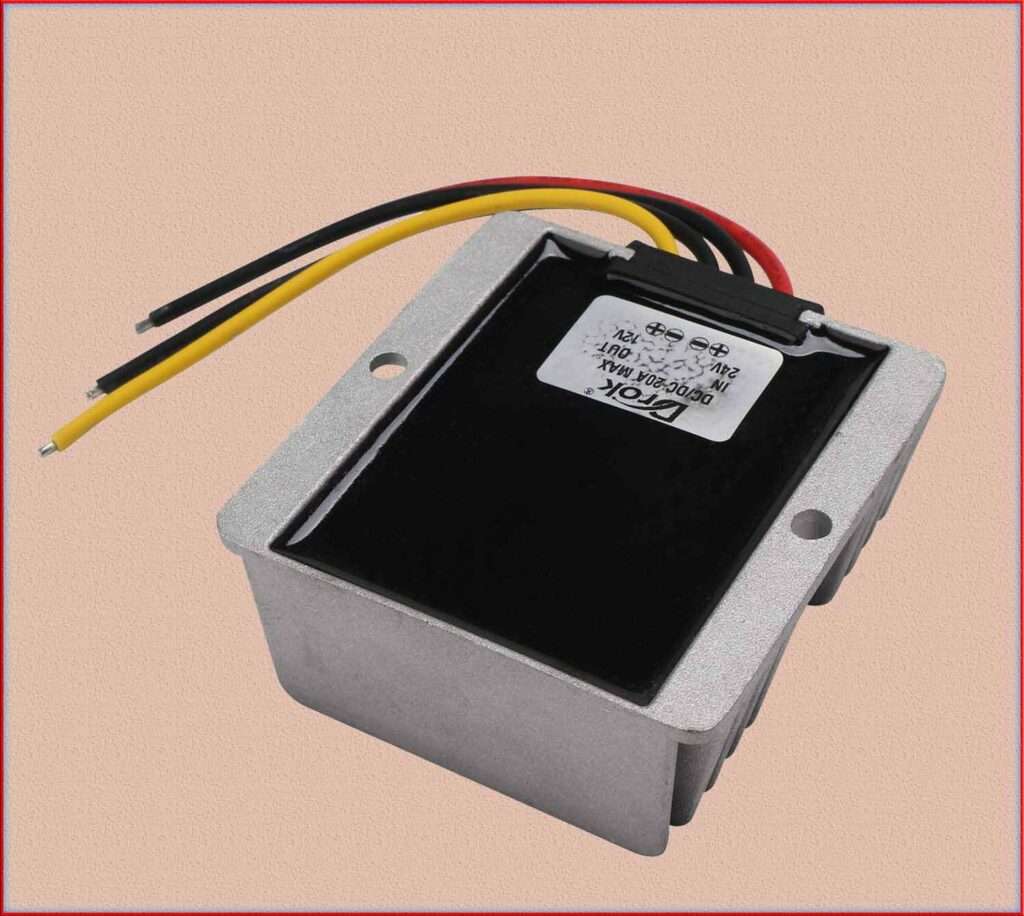DC to DC Converter 12V: A Comprehensive Guide
A DC to DC converter 12V is an electronic device designed to convert a direct current (DC) input voltage to a different DC output voltage, specifically 12 volts. This type of converter is commonly used in various applications where a stable 12V DC power supply is required, and the input voltage might be different from the desired output voltage.
Read More About

Let’s explore the components, wiring details, and applications of a DC to DC converter 12V.
Components of DC to DC Converter 12V
Input Power Source: The input power source can be a battery, a solar panel, or any other DC source with a voltage that needs to be converted to 12V DC.
DC to DC Converter Circuit: The heart of the converter is the electronic circuit responsible for stepping up or stepping down the input voltage to the desired 12V DC output voltage. This circuit usually includes a switching regulator, which operates in a high-frequency switching mode to efficiently regulate the output voltage.
Inductor/Capacitor: The DC to DC converter circuit includes an inductor and capacitor components, which are used in the switching regulator circuit for energy storage and filtering purposes.
Voltage Regulator: In some cases, the output of the DC to DC converter may be further regulated using a voltage regulator to ensure a stable 12V output voltage, especially during variations in input voltage or load conditions.
Heat Sink: Due to the power conversion process, the components in the DC to DC converter may generate heat. A heat sink is used to dissipate the excess heat and maintain the converter‘s efficiency and reliability.

Wiring Details of DC to DC Converter 12V
Input Wiring: The input wiring is connected to the DC power source that provides the initial voltage, which may be higher or lower than 12V DC.
DC to DC Converter Wiring: The output of the input power source is connected to the DC to DC converter circuit, where the conversion to 12V DC takes place.
Output Wiring: The output wiring is connected to the output terminals of the DC to DC converter, where the stable 12V DC voltage is obtained.
Optional Voltage Regulator Wiring: If an additional voltage regulator is used, it is connected between the output of the DC to DC converter circuit and the output terminals to further stabilize the 12V DC output.
Applications of DC to DC Converter 12V
A DC to DC converter 12V finds numerous applications in various industries and devices, including but not limited to:
Automotive Electronics: It is used in automotive applications to step down the battery voltage (usually 24V or 48V) to 12V for powering various accessories, lighting systems, and sensors.
Consumer Electronics: DC to DC converters are commonly used in electronic devices, such as routers, modems, and laptops, which require a stable 12V DC power supply.
Industrial Equipment: It is employed in industrial equipment and machinery that requires a specific and stable 12V DC voltage for proper operation.
Telecommunications: DC to DC converters are used in networking devices, telecommunications equipment, and base stations for efficient power conversion.
Battery Charging Systems: DC to DC converters can be used in battery charging systems to step down or step up the voltage to the required charging voltage for specific battery types.
Renewable Energy Systems: In renewable energy setups, such as solar panels or wind turbines, DC to DC converters can be used to regulate and convert the generated DC voltage to 12V for battery charging or powering DC loads.
Where to Buy?
- Waterproof DC-DC 17-35V 24V to 12V Step-Down Power Supply
- uxcell Voltage Converter Regulator DC/DC DC 24V to DC 12V 40A
- DROK Waterproof 60W Voltage Regulator Stabilizer 10V-36V to 12V 5A
- Queta 6 Pieces LM2596s DC to DC Buck Converter Voltage Regulator
In conclusion, a DC to DC converter 12V is a versatile electronic device used to convert DC input voltage to a stable 12V DC output voltage. It involves components like a DC to DC converter circuit, inductor, capacitor, voltage regulator (if required), and heat sink.
The converter finds applications in automotive electronics, consumer electronics, industrial equipment, telecommunications, battery charging systems, and renewable energy setups, where a stable 12V DC power supply is essential for proper operation.
Related Posts:
- A Quick Guide to Oscillator Circuit Diagram and Working
- Dc to Dc Converter: Important Things to know in your first Converter
- AC to DC Converter: Everything You need to Know
- How to Choose the Right Type of HIGH PASS FILTER!
- How To Make Your Product Stand Out With LOW PASS FILTER?
- Schmitt Trigger: Important Types, Working & Applications
Subscribe to our Newsletter “Electrical Insights Daily” to get the latest updates in Electrical Engineering. You can also Follow us LinkedIn and Facebook to see our latest posts on Electrical Engineering Topics.
